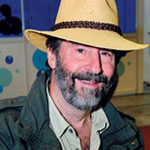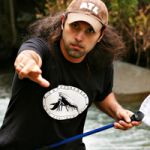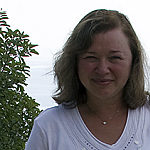Big cypress swamp
The 5th place in the qualifying stage of the Biotope Aquarium Design Contest 2013
![]() Russia. Anastasia Melnikova
Russia. Anastasia Melnikova

Volume: 40 L
List of fishes: Elassoma evergladei, Jordanella floridae, Heterandria formosa, Cambarellus schmitti, Pomacea paludosa
List of plants: Ludwigia repens, Ludwigia palustris, Bacopa monnieri
Biotope description: This is a huge, regularly flooded wetland located on the western edge of the Everglades, Florida, USA. Dense thickets of swamp cypress (Taxodium distichum) with conical aerial roots (pneumatophores) covering a large amount of sub-tropical sun, moist climate form a special, mysterious piece of nature, a great biotope for the inhabitants of the underwater world. Slow or no flow, humic water of the cypress swamp are indicators of acidity and hardness at the medium level, changes can be caused by different types of soils. The look of the biotope formed by peat and sand substrate of dark color, rows of vertical aerial roots of swamp cypress and dense thickets of marsh plants that can survive the dry season. As inhabitants a few medium-sized species of fish and crabs can be mentioned, who peacefully co-exist in different layers of the biotope. Between the leaves and stems of plants there are tiny Elassomas and Heterandria formosa searching for small live food, the more massive Jordanella floridae eats algae closer to the surface, and the dwarf marsh crabs are looking for food on the bottom, among the fallen branches and foliage.

Has deserved the first prize, because it is really correctly done in every sense, she coordinated the correct fishes and plants that live in such biotope and even mentioned the trees growing there. Congratulations, keep up the great work and education for anyone to learn from it.

I snorkled a lot in Florida and this is a very realistic scenery that could happen in any of the little creeks in Madison or Leon County around Tallahassee. Especially I was happy to see C. schmitti in there. Florida is one of my favorite snorkel places on this planet, even if the alligators are scary sometimes. Well done!
It’s a small aquarium, but looks like a larger one. And in fact, such layout would be very suitable for a much larger tank, imitating flooded wetland. Stems of Ludwigia repens look very natural, “entangling” themselves along fragments of driftwood. And the lighting is great, with these “columns of light” in the water.

Gorgeous aquarium, good photo, optimal selection of the inhabitants, concise selection of plants. The only pity is the crayfish is not seen on any of the pictures, but his way of life is quite secretive, maybe that’s why it can not be seen? I like driftwood, smooth like aerial roots of swamp cypress, I like selection and set up of the substrate, it is slightly silty, but for the aquarium there’s no need to get more, a few leaves at the bottom complete the composition. The underwater landscape looks natural and mysterious. Rays of the “sun” and highlights on the right “cypress” reinforce this impression. The plants over the water create a light shade in the aquarium. Everything is wonderful in this little world, but something is bothering me, something is wrong… The proportions! Driftwood mimic the aerial roots of cypress trees, which are quite massive, and Ludwigia is Ludwigia, it looks unnaturally large in comparison with the roots. However, it is very difficult to achieve the ideal proportions in a small volume, maybe driftwood should be less massive and less in quantity, or plants should have small leaves… And maybe I should forget about skapers troubles and just enjoy the aquarium.
